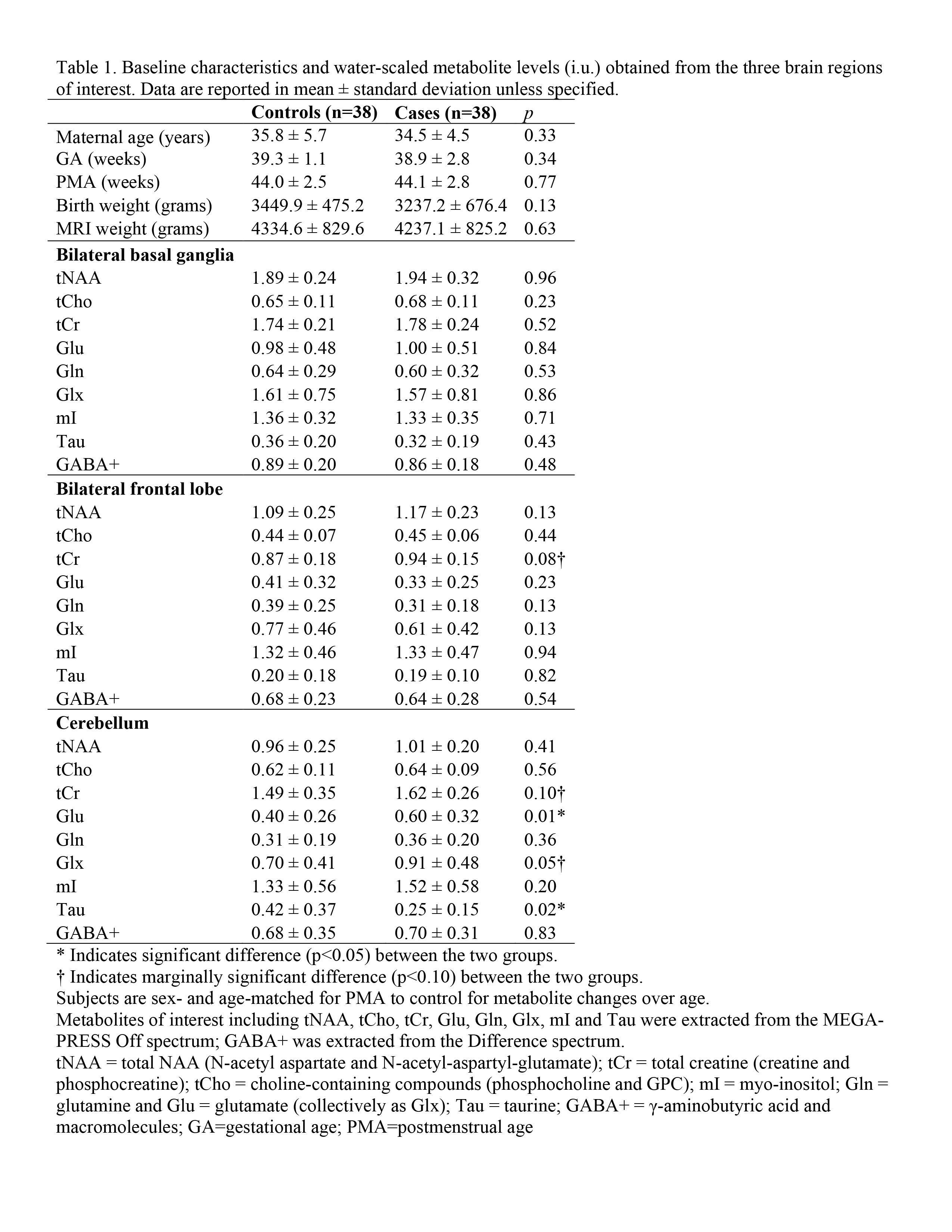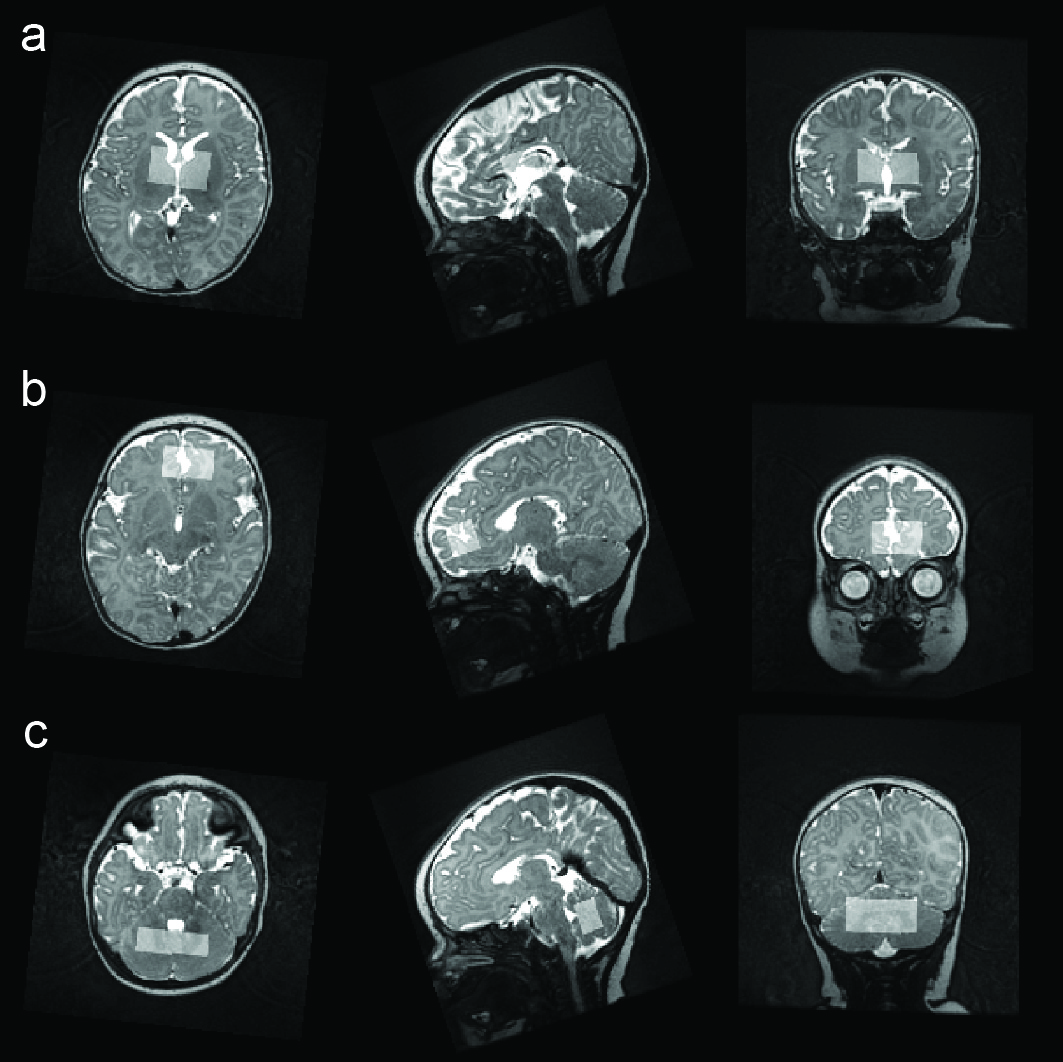Neonatal General 5: Infectious Disease and Immunology
Session: Neonatal General 5: Infectious Disease and Immunology
150 - Brain metabolite concentrations in neonates of mothers with COVID-19 exposure during pregnancy: a case-control study
Saturday, April 26, 2025
2:30pm - 4:45pm HST
Publication Number: 150.4416
Steve CN. Hui, Children's National Health System, Washington, DC, United States; Julius Ngwa, Children's Hospital, Washington, DC, United States; Kushal Kapse, Children's National Health System, Washington, DC, United States; Nickie Andescavage, Children's National Health System, Washington, DC, United States; Catherine Limperopoulos, Children's National Health System, Washington DC, DC, United States

Nickie Andescavage, MD
Associate Professor
Children's National Health System
Washington, District of Columbia, United States
Presenting Author(s)
Background: Rapid emergence of the SARS-CoV-2 virus resulted in the COVID-19 pandemic. It has been reported that ACE2, the SARS-CoV-2 receptor, was highly expressed in maternal-fetal interface cells like the placenta (1). Population-based studies suggested that infected mothers were at higher risk of preterm delivery, with concerns for altered brain development and neurodevelopmental outcomes (2-4).
Objective: In this study, brain metabolite levels were compared between a cohort of neonates of mothers with COVID-19 exposure during pregnancy and neonates of unexposed, healthy mothers.
Design/Methods: Neonates of healthy mothers (controls) and neonates of mothers with COVID-19 exposure (cases) were recruited prospectively. Inclusion criteria comprised of pregnant women who had been infected with COVID-19 during pregnancy and singleton gestation. All participants underwent MRI using a 3T GE scanner. MR spectra were acquired using MEGA-PRESS (5) (TR/TE=1800/68 ms) in voxels (35x15x20 mm^3) positioned in the cerebellum, basal ganglia and frontal lobe (Figure 1). A total of 9 cerebral metabolites were modeled and compared using independent samples t-test.
Results: Data were successfully obtained from 38 cases and 38 sex- and age-matched controls. Baseline characteristics and metabolite levels are shown in Table 1. Metabolite measurements were consistent in the basal ganglia. In the cerebellum, glutamate (Glu) levels were significantly (p < 0.05) increased, and taurine (Tau) significantly deceased in the cases compared to controls, with marginal increases in Glx (p=0.05, glutamate + glutamine) and total creatine (tCr, p=0.10) in cases as well. A similar trend of increased tCr (p=0.08) also was observed in the frontal lobe. Water-scaled metabolite levels were summarized in boxplots (Figure 2).
Conclusion(s): Glu, the most abundant amino acid in the human brain and serves as an excitatory neurotransmitter, was elevated in newborn with prenatal COVID-19 exposure. Abnormal increases in the composite of Glx may be indicative of regional excitotoxicity leading to regional destructive processes (6). In contrast, Tau serves as an inhibitory neurotransmitter regulating brain function and neuronal activity, protecting the brain from oxidative stress, and promoting healthy neurodevelopment. The decrease of Tau in the case group further suggests potential underlying cellular disruption during early neurodevelopment. The elevations of tCr in frontal lobe and cerebellum, though not statistically significant, may reflect potential higher energy consumption within brain cells in the case group.
Table 1
 Baseline characteristics and water-scaled metabolite levels (i.u.) obtained from the three brain regions of interest. Data are reported in mean ± standard deviation unless specified.
Baseline characteristics and water-scaled metabolite levels (i.u.) obtained from the three brain regions of interest. Data are reported in mean ± standard deviation unless specified.Figure 1
 Representative voxel locations in (a) bilateral basal ganglia (38 x 16 x 22 mm^3), (b) bilateral frontal lobe (34 x 14 x 19 mm^3) and (c) cerebellum (31 x 11 x 16 mm^3) from a female neonate of mothers with COVID-19 exposure during pregnancy. Volume of the voxel was adjusted in each individual subject to optimize the placement and to avoid unwanted brain tissues.
Representative voxel locations in (a) bilateral basal ganglia (38 x 16 x 22 mm^3), (b) bilateral frontal lobe (34 x 14 x 19 mm^3) and (c) cerebellum (31 x 11 x 16 mm^3) from a female neonate of mothers with COVID-19 exposure during pregnancy. Volume of the voxel was adjusted in each individual subject to optimize the placement and to avoid unwanted brain tissues.Figure 2
.jpg) Boxplots for water-scaled metabolite levels (i.u.) in (a) the bilateral frontal lobe and (b) the cerebellum. In the bilateral frontal lobe, a noticeably difference (p=0.08) is observed in tCr between neonates of healthy mother (control) and neonates of mother with COVID-19 exposure during pregnancy (case). In the cerebellum, significant differences (p < 0.05) are observed in Glu and Tau between neonates of healthy mother (control) and neonates of mother with COVID-19 exposure during pregnancy (case). Of note, Glx is marginal significantly different (p=0.05) between the two groups driven by the increase of Glu. tCr also has a strong increasing trend in the case group.
Boxplots for water-scaled metabolite levels (i.u.) in (a) the bilateral frontal lobe and (b) the cerebellum. In the bilateral frontal lobe, a noticeably difference (p=0.08) is observed in tCr between neonates of healthy mother (control) and neonates of mother with COVID-19 exposure during pregnancy (case). In the cerebellum, significant differences (p < 0.05) are observed in Glu and Tau between neonates of healthy mother (control) and neonates of mother with COVID-19 exposure during pregnancy (case). Of note, Glx is marginal significantly different (p=0.05) between the two groups driven by the increase of Glu. tCr also has a strong increasing trend in the case group.
